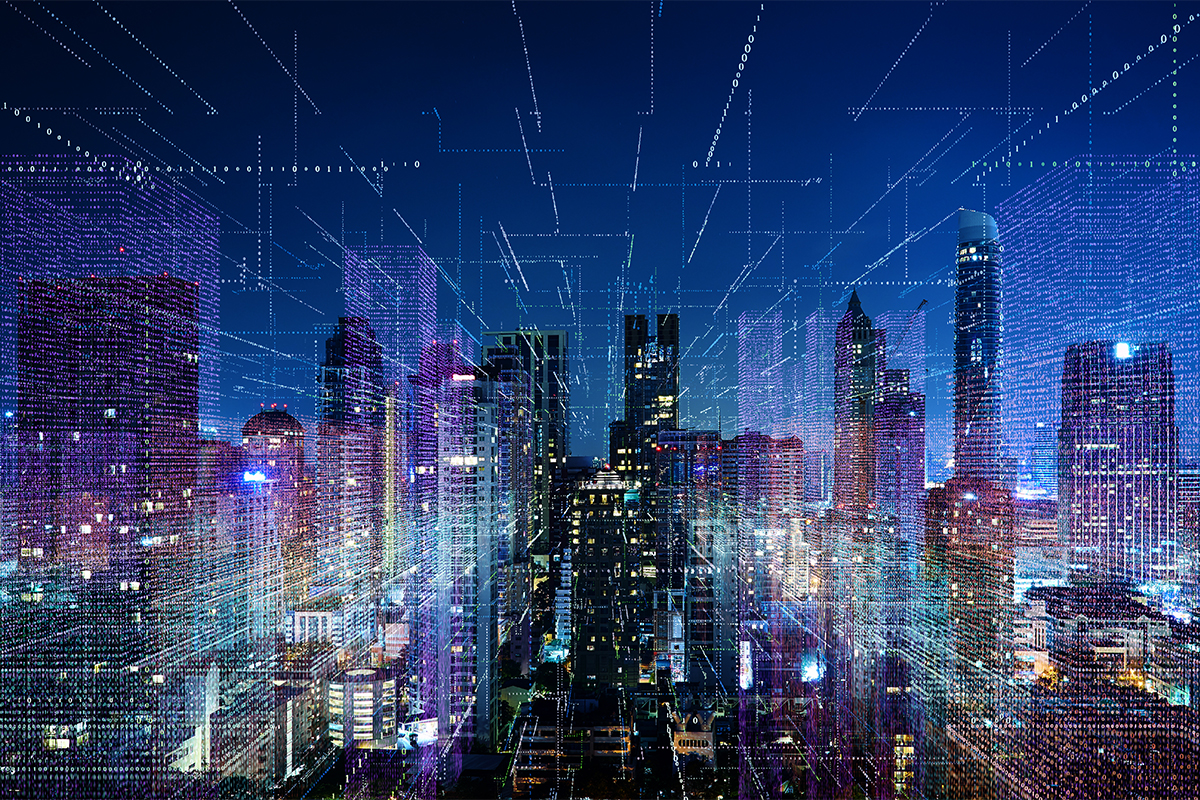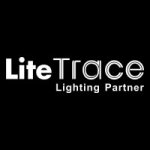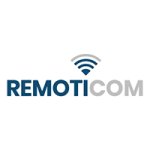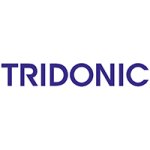Smart lighting control is the foundational aspect of creating an intelligent and efficient lighting system. It serves as the cornerstone upon which various smart technologies and functionalities are built to enhance user experience, energy efficiency, and overall functionality. At its core, smart lighting control enables the adjustment of lighting levels, colors, and timing based on factors such as occupancy, daylight levels, time of day, and user preferences. This basic functionality forms the basis for more advanced features and capabilities. Smart lighting control integrates various components such as sensors, wireless communication, and control devices to create a cohesive system. This integration ensures seamless communication and coordination between different elements of the lighting system. Smart lighting control enables automation of lighting operations, reducing the need for manual intervention. Automation can include tasks such as turning lights on/off based on occupancy, adjusting brightness levels in response to natural light, and scheduling lighting scenes for different times of the day or activities. Smart lighting control offers a high degree of customization, allowing users to tailor lighting settings to their preferences and needs. Whether it's adjusting brightness levels, selecting
color temperatures, or creating personalized lighting scenes, customization enhances user comfort and satisfaction. By dynamically adjusting lighting levels and schedules, smart lighting control maximizes energy efficiency. This leads to significant energy savings compared to traditional lighting systems, making it an essential component of sustainable and environmentally friendly building designs.
LED technology propelled smart lighting forward
The evolution of LED technology has been instrumental in the development of smart lighting. The semiconductor nature of LEDs allows for precise control over light output, which can be further enhanced by smart features. It allows for dynamic adjustment of lighting conditions to suit different tasks, preferences, and environments. This controllability is essential for implementing smart lighting features such as dimming, color tuning, and programmable lighting scenes. As semiconductor emitters, LEDs are inherently compatible with electronic control systems and digital interfaces. This compatibility facilitates the integration of LEDs with smart lighting platforms, enabling remote control, scheduling, automation, and connectivity to other smart devices and networks.
LED lights can be equipped with sensors, microcontrollers, and communication modules to enable connectivity to networks and devices. This connectivity allows for remote control, automation, and coordination of lighting settings, enhancing user convenience and energy efficiency. LEDs can be spectrally engineered to produce a wide range of colors, color temperatures, and intensity levels, allowing for customizable lighting schemes tailored to different tasks, moods, and preferences. This capability enables the creation of dynamic lighting environments that adapt to changing needs and enhance the aesthetic appeal of spaces.
Smart lighting systems powered by LED technology facilitate new ways of interacting with our environments. Users can control lighting settings using smartphones, tablets, voice commands, or automated schedules, providing unprecedented convenience and flexibility. Additionally, smart lighting systems can integrate with other smart devices and systems in homes, offices, and public spaces, enabling coordinated actions and enhancing the overall user experience.
Multifaceted technology impacts
The impact of technology on smart lighting is multifaceted and transformative. Alongside LED lighting, there are additional technologies that significantly impact the advancement of smart lighting systems. These technologies augment the capabilities of smart lighting and enhance its overall performance. Wireless communication technologies like
Bluetooth, Wi-Fi,
Zigbee, or Z-Wave enable connectivity between smart lighting devices and other
smart home devices or control interfaces. Various sensors, such as
motion sensors,
daylight sensors, occupancy sensors, and temperature sensors, enhance the intelligence of smart lighting systems by enabling them to react to environmental conditions or user behavior. Artificial intelligence (AI) algorithms can be employed to optimize energy usage, personalize lighting settings based on user preferences, or automate lighting control based on patterns and habits. Cloud-based platforms enable remote access and control of smart lighting systems, as well as data storage, analysis, and management for advanced functionalities like predictive maintenance or performance optimization. Advanced control interfaces, including smartphone apps, voice assistants (e.g., Amazon Alexa, Google Assistant), or dedicated smart home hubs, provides intuitive ways to interact with and manage smart lighting setups.
The science of lighting control
Lighting control in smart lighting systems involves the management and regulation of lighting sources through various technologies and methods to achieve desired illumination levels, energy efficiency, and user convenience. The role of the
LED driver is critical to the successful implementation of controls in smart LED lighting systems because it enables precise control, compatibility with control signals, support for advanced features, and optimization of energy efficiency, reliability, and longevity. Smart lighting systems rely on control signals to adjust the lighting conditions based on user preferences, automation rules, or external factors like occupancy or ambient light levels. The LED driver must be compatible with these control signals to respond accurately to commands from the lighting control system. Integration between the
lighting controls and the LED driver often involves the use of control interfaces that make use of protocols such as DALI (
Digital Addressable Lighting Interface),
DMX (Digital Multiplex), 0-10V, PWM (pulse width modulation), or proprietary protocols. Smart lighting systems are equipped with built-in communication capabilities, allowing them to connect wirelessly to a central control system or directly to user devices like smartphones or tablets. They provide users with interfaces for controlling and managing their lights. This can include smartphone apps, web-based portals, physical switches, or voice commands via smart assistants. Smart lights communicate with each other and with the central control system using wireless protocols such as Zigbee, Z-Wave, Bluetooth, or Wi-Fi. These protocols enable reliable and efficient communication over short or long distances. Many smart lighting systems feature a central control system, which can be a dedicated hub, a gateway, or cloud-based software. This central system serves as the command center for managing all connected smart lights within a home or building.
From indoor to outdoor: the extensive reach of smart lighting control
The applications of smart lighting control are diverse and span across various sectors including residential, commercial, industrial, and outdoor environments. In homes, smart
lighting control systems allow users to remotely adjust lighting settings, such as brightness, color temperature, and ambiance, using smartphones, tablets, or voice commands. Features like scheduling, motion sensing, and occupancy detection enhance convenience, security, and energy efficiency. mart lighting control is widely used in commercial buildings, offices, and retail spaces to optimize energy usage, enhance employee productivity, and improve occupant comfort. Advanced lighting management systems enable centralized control, occupancy-based dimming, daylight harvesting, and integration with building automation systems for seamless operation and maintenance. Smart lighting control extends to outdoor environments, including streets, parks, and architectural landmarks.
Connected street lighting systems use sensors and data analytics to adjust brightness levels based on traffic patterns, weather conditions, and time of day, enhancing safety and reducing energy waste.
Architectural lighting installations highlight buildings, monuments, and public spaces, creating visually stunning displays while minimizing light pollution and environmental impact. In hotels, restaurants, and entertainment venues, smart lighting control systems create immersive and dynamic environments that enhance guest experiences. Lighting scenes can be programmed to match specific themes, events, or activities, while intuitive control interfaces enable staff to adjust settings easily to meet changing needs and preferences. In industrial settings such as warehouses, factories, and manufacturing plants, smart lighting control systems improve safety, productivity, and operational efficiency. Motion sensors and task-based lighting ensure adequate illumination in work areas, while dimming controls and daylight harvesting help reduce energy consumption. Integration with production systems enables synchronized lighting with manufacturing processes. Smart lighting control systems are utilized in healthcare facilities to promote patient comfort, support circadian rhythms, and enhance staff productivity.
Tunable white lighting systems mimic natural daylight patterns, helping to regulate sleep-wake cycles and improve overall well-being. Task lighting and localized control allow for precise illumination in
patient rooms, treatment areas, and workspaces. Smart lighting control systems in schools, colleges, and universities contribute to energy conservation, student engagement, and academic performance. Lighting scenes can be tailored for different learning activities, while occupancy sensors and scheduling features ensure lights are only active when needed. Integration with building management systems enables centralized monitoring and optimization of lighting operations.
Digital lighting control
Digital lighting control systems serve as the backbone of smart lighting by providing the infrastructure, functionality, and intelligence necessary to create flexible, efficient, and adaptive lighting environments in various settings, from homes and offices to commercial and public spaces. At the core of digital lighting control systems is a digital interface that enables users to interact with and control the lighting system. This interface can take various forms, including physical switches, touch panels, mobile apps, or web-based platforms. Digital lighting control systems enable the segmentation of a space into distinct zones, each with its own set of lighting fixtures. These zones can be defined based on factors such as room function, occupancy patterns, or aesthetic considerations. By dividing the space into zones, lighting can be tailored to specific needs within each area, providing greater flexibility and customization. Within each zone, digital lighting control systems offer the flexibility to implement multiple control strategies. These strategies can include dimming, color tuning, scheduling, occupancy sensing, daylight harvesting, and task tuning. Digital lighting control systems support advanced programming and automation capabilities, allowing users to create customized lighting scenes, schedules, and sequences. These automation features can be based on time-of-day, occupancy status, daylight availability, or user preferences, optimizing energy efficiency and enhancing user experience. Digital control systems provide the flexibility to accommodate a wide range of lighting configurations and scalability to adapt to changing needs and requirements. They can be easily expanded or reconfigured to accommodate additional fixtures, zones, or functionalities as the lighting system evolves over time. By enabling precise control and management of lighting, digital lighting control systems contribute to energy efficiency and optimization in smart lighting applications. They allow for dynamic adjustment of lighting levels based on occupancy, daylight availability, and user preferences, helping to minimize energy consumption while maintaining comfort and visibility.
Light controller
A light controller refers to a device or component responsible for managing and regulating the operation of the LEDs. The light controller is typically a digital or electronic device designed to control the behavior of the LEDs in the lighting system. It can take various forms, including microcontrollers, programmable logic controllers (PLCs), dedicated lighting control modules, or integrated circuits (ICs) specifically designed for LED lighting applications. The light controller may offer a range of functionalities and features, depending on the complexity of the LED lighting system and the specific requirements of the application. IC controllers often integrate various functions such as dimming, color control, and communication protocols into a single chip, providing a compact and cost-effective solution for basic LED lighting applications. Microcontroller-based controllers offer greater flexibility and programmability compared to IC controllers, allowing for more advanced lighting control features and customization options. They are commonly used in smart lighting systems and applications requiring dynamic lighting effects or sophisticated control algorithms. PLCs are industrial-grade controllers commonly used in commercial and
industrial lighting applications. PLCs offer robustness, reliability, and scalability, making them suitable for controlling large-scale lighting systems in warehouses, factories, and outdoor spaces. They can be programmed to execute complex lighting control sequences, integrate with other building systems, and provide advanced monitoring and diagnostics capabilities. DALI controllers enable bidirectional communication between lighting fixtures and control devices, allowing for precise control of individual fixtures or groups of fixtures. DALI controllers are commonly used in commercial buildings, offices, and retail spaces where granular control and energy management are essential. Centralized lighting control systems centralize the control and management of multiple lighting zones or fixtures within a building or facility. Centralized controllers are typically installed in a central control room or server, allowing operators to monitor and adjust lighting settings across the entire premises from a single interface. These systems are commonly used in large commercial buildings, campuses, and hospitality venues.
DMX controllers are used in professional lighting setups where precise control over multiple LED fixtures is required. DMX controllers send digital control signals over DMX cables to LED fixtures, allowing users to program complex lighting sequences, fades, and effects. DMX controllers are commonly used in
stage lighting, concerts, theaters, and
architectural lighting installations.
Next-level control
In smart lighting applications, where advanced features like remote control, automation, and integration with other smart devices are essential,
light controllers come in several specialized forms. A smart hub or gateway serves as the central control point for all smart lighting devices within a smart home or building. It typically connects to the internet and acts as a bridge between the user's smartphone or other control interfaces and the individual smart lighting devices. Smart hubs often support multiple communication protocols to ensure compatibility with a wide range of smart lighting products. Smart light switches and
LED dimmers replace traditional light switches and allow users to control their lighting remotely via a smartphone app or voice commands. These devices often feature programmable scheduling, dimming capabilities, and integration with smart home platforms like Amazon Alexa or Google Assistant. Some smart switches also include built-in occupancy or motion sensors for automatic control based on room occupancy. Dedicated smart lighting controllers are designed specifically for managing and coordinating multiple smart lighting devices within a single system. These controllers offer advanced programming and automation features, allowing users to create complex lighting scenarios, schedules, and rules. They may also support integration with other smart home devices and platforms for enhanced functionality and interoperability. Cloud-based lighting management platforms enable centralized control and monitoring of smart lighting systems over the internet. These platforms provide web-based interfaces for users to manage their lighting settings, access real-time data and analytics, and receive remote firmware updates. Cloud-based solutions offer scalability, flexibility, and accessibility, making them ideal for commercial and large-scale smart lighting deployments.
LED technology, with its digital characteristics, facilitates the convergence of lighting systems with Information Technology (IT) and their integration into the
Internet of Things (IoT). In turn, the integration of
IoT technology brings smart lighting systems to the next level by enhancing connectivity, interoperability, data-driven insights, automation, personalization, energy efficiency, and sustainability. IoT enables smart lighting systems to connect to the internet and communicate with other devices and systems. This connectivity allows for remote control and monitoring of lighting fixtures from anywhere with an internet connection, providing unprecedented convenience and accessibility. IoT facilitates interoperability between different smart devices and platforms, enabling seamless integration and interaction between smart lighting systems and other IoT-enabled devices such as sensors, smart thermostats, security cameras, and voice assistants. This interoperability enhances the overall intelligence and functionality of the smart home or building ecosystem. IoT-enabled smart lighting systems can collect and analyze data from various sources, including sensors, user interactions, and environmental conditions. This data can provide valuable insights into lighting usage patterns, energy consumption, occupancy trends, and user preferences, allowing for optimization of lighting performance and energy efficiency. IoT enables advanced automation capabilities in smart lighting systems, allowing them to adjust lighting settings automatically based on factors such as time of day, occupancy status, daylight availability, and user preferences. This automation enhances comfort, convenience, and energy savings by ensuring that lighting is optimized for the specific needs of the space and its occupants. IoT empowers users with greater control and personalization options for their lighting environments. Through smartphone apps, voice commands, or web-based interfaces, users can customize lighting scenes, schedules, and preferences to suit their individual preferences and lifestyles, enhancing their overall experience and satisfaction with the lighting system. By leveraging IoT technology for intelligent control and optimization, smart lighting systems can achieve significant energy savings and contribute to sustainability efforts.
In the era of IoT, lighting control undergoes a significant transformation, evolving from traditional manual control methods to intelligent, connected systems. Traditional lighting control systems often rely on physical switches or manual adjustments. With IoT, lighting control becomes interconnected and internet-enabled. Lighting fixtures, sensors, and control devices are equipped with wireless communication capabilities, allowing them to connect to the internet and communicate with each other. IoT facilitates integration between lighting control systems and other smart devices and platforms. Lighting systems can communicate with smart thermostats, security cameras, voice assistants, and other
IoT devices to coordinate actions and enhance functionality. For example, lights can automatically dim when the security system is armed or adjust based on room temperature detected by the thermostat. IoT-enabled lighting control systems collect and analyze data on lighting usage, occupancy patterns, and environmental conditions. This data-driven approach enables optimization of lighting performance and energy efficiency. Advanced analytics identify opportunities for energy savings, predictive maintenance, and continuous improvement, ensuring that lighting systems operate at peak efficiency over time. IoT-based lighting control systems offer scalability and flexibility to accommodate changing needs and requirements. Additional lighting fixtures, sensors, or control devices can be easily integrated into existing systems without the need for extensive rewiring or infrastructure upgrades. This scalability ensures that lighting control solutions can grow and evolve alongside evolving technology and user needs.
Navigating complexity: sophisticated control in IoT-based smart lighting
The high degree of sophistication in lighting control for IoT-based smart lighting arises from the need to manage interconnected systems, support dynamic and adaptive lighting behaviors, integrate diverse sensors and devices, optimize energy efficiency, and enable remote monitoring and management. IoT-based smart lighting involves a network of interconnected devices, including light fixtures, sensors, controllers, and central management systems. Managing and coordinating these devices in a cohesive manner demands sophisticated control algorithms and protocols. Smart lighting systems are expected to dynamically adjust lighting conditions based on factors such as occupancy, daylight availability, time of day, and user preferences. Achieving this level of adaptability necessitates advanced control mechanisms capable of processing real-time data and making intelligent decisions. Smart lighting systems often integrate with various sensors (e.g., motion sensors, occupancy sensors, ambient light sensors) and other IoT devices (e.g., thermostats, security systems). Coordinating the inputs from these diverse sources and orchestrating appropriate lighting responses requires sophisticated control logic. One of the primary objectives of IoT-based smart lighting is to optimize energy usage while addressing the lighting needs. This optimization involves complex algorithms for dimming, scheduling, zoning, and load balancing, which must adapt dynamically to changing conditions and user requirements. Smart lighting systems typically offer remote monitoring and management capabilities, allowing users to control and monitor lighting operations from anywhere via mobile apps or web interfaces. Implementing secure and reliable remote access requires sophisticated control mechanisms to ensure data privacy, authentication, and seamless connectivity.





































